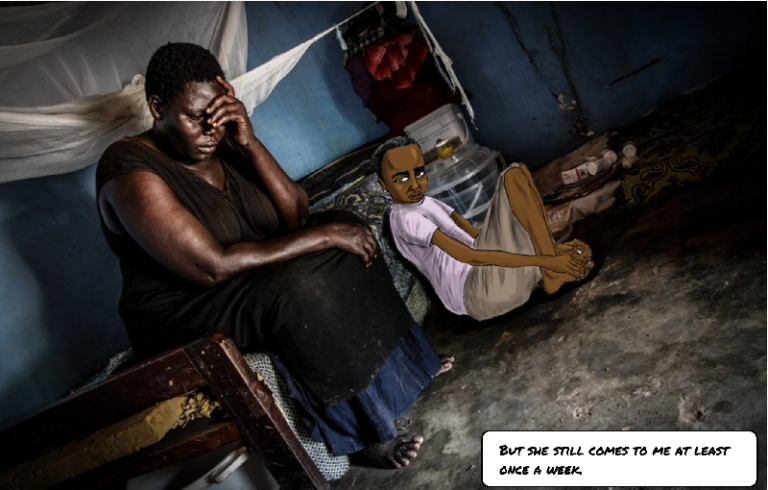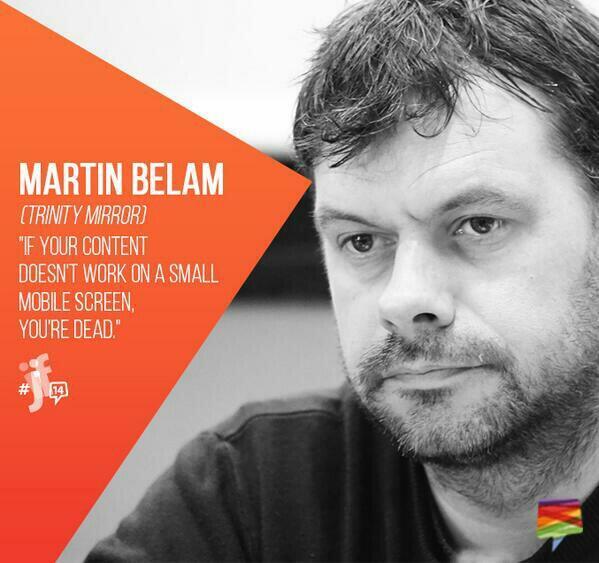“Graphic content, graphic novels” – Marc Ellison discusses his work at #ijf17
I’ve been at the International Journalism Festival in Perugia, and one of the highlights for me was a session called “Graphic content. Graphic novels“, where journalist Marc Ellison talked through the projects where he has rendered stories in the form of hybrid-photo essay graphic novels online. It was a fascinating use of format for story-telling, and I really recommend you check them out.
Marc Ellison explained that he bills himself as a “post-war correspondent”. He has been reporting on the struggles of people who were abducted and used as child soldiers, or witnessed dreadful horrors during war, to integrate back into society after their trauma. He has also reported on the experiences of FGM.
He said he had long been a fan of graphic novels, and had been particularly inspired by the work of Art Spiegelman, whose “Maus” won a Pulitzer Prize in 1992 for its comic book retelling of memories of living with the Nazis and surviving the holocaust.
Ellison argues that as human beings we are naturally stimulated more by video and pictures, and find it more engaging than monochrome slabs of text. The use of visual art as a medium in the earliest caves inhabited by humans shows that images are a way to remember events, and to pass down stories for future generations. Ultimately, as journalists, that’s what we are trying to do.
Marc Ellison said “I often label my work as the 2.0 version of the graphic novel. I am trying to engage a population that is increasingly tech savvy. We expect all-singing, all-dancing content.”
He showed one project called “Graphic memories” – which features the stories of survivors of The Lord’s Resistance Army in Uganda. They often have PTSD, mental health issues, or are HIV positive as a result of being taken as wives or raped. Some of them were abducted at an age as young as 6, have had virtually no education, now have kids, and find it very difficult to obtain work.
While the stories are horrific – and I do recommend you read it – it was the story-telling style that was of particular technical interest to the audience at the festival. In particular, Ellison had blended photography of the subjects of the stories, with illustrations of the nightmares that continue to haunt them about their experiences.

Ellison wrote and programmed this story all by himself – using the skrollr library to produce a parallax scrolling effect. Marc added that “I was a computer programmer for the better part of a decade before I became a journalist, as part of my pre-mid-life crisis. I wouldn’t do this again. I wore every single hat on this story from programmer to interviewer to promotion person.”
Marc discussed a little bit the ethical approach he took to these stories and interviews. He was very conscious that re-telling the story might re-traumatise the victims, and so everything was handled very carefully with consent, and with counsellors on hand to help if needed.
On a technical note, Marc said that a few editors had turned down the work because it didn’t work on mobile phone screens. He was a little prickly about this, and said that it was too difficult and fiddly to do, but I’ll just leave this flattering poster here from a previous appearance of mine at the International Journalism Festival.

Marc showed another project, this time about girls who have to run away from their families to avoid the FGM “cutting season”. Marc said one real advantage of the graphic novel format is it made it much easier to anonymise the young girls featuring in the story. He also outlined another ethical issue. While they were out in a village collecting stories, it became clear that there were some girls who needed to escape that day, and they had to make a snap decision as to whether they would allow their transport to be used in this way, or whether they needed to stay pure and aloof from the situation as observers. Marc says they thought for a nanosecond, and then helped the girls escape.
Ellison was quite open and frank about some of the criticisms of his style of work that he receives, that “comic book journalism – it’s not real journalism”. The argument is that the illustrative style removes it from being true reportage, that drawings are open to artistic impression and bias. There’s an impression that a comic might not be as factually accurate, or as well researched as a more traditional documentary.
He says people sometimes imply “your use of the format is a gimmick or a fad”, but his response is pretty solid: “if it means that people are learning about FGM, or the stories of these abducted children, then so be it.” He pointed out that his FGM story has been produced as a translated PDF, which is printed out and used as a learning aid locally now.
People often think the graphic novel is a world of superheroes and embellishment and unrealistic scenarios – but really it is just one story-telling mechanism among many. Ellison says that it is a descendant of photojournalism, an attempt to capture reality in its own way, accompanied by captions, just as a photo-essay was. He said it isn’t as if traditional story-telling hasn’t suffered from fakery and exaggeration, citing a staged photograph from the Spanish Civil War, or questioning whether Kevin Carter cropped one of his award-winning images so tightly that it didn’t portray the true picture. Art Spiegelman even pointed out that journalists writing in the third person rather than the first person all the time is, in effect, a distortion.
I hope, Ellison said, that the interactivity in these stories adds to engagement, but that just because you can, doesn’t mean you should. He said 360° video is “hot and sexy” at the moment, but why are you using it to do a one-on-one interview? It’s not the right medium for that. I wouldn’t use this comic format on every story, he said, specifically saying “I wouldn’t use the graphic novel to tell the story of Brexit.” So wrong, I would totally read the fuck out of that. Imagine the battle on the Thames in comic form.
I got the chance to ask Marc a question, and wondered if it would have occurred to him to tell stories this way if he hadn’t first had that computer developer experience. He said he thought he would have done, because of the style of stories that had inspired him. “The nucleus of the idea was there, and I was just fortunate that I had the programming chops to do it.”
![]()
Find all my blog posts from the 2017 International Journalism Festival.